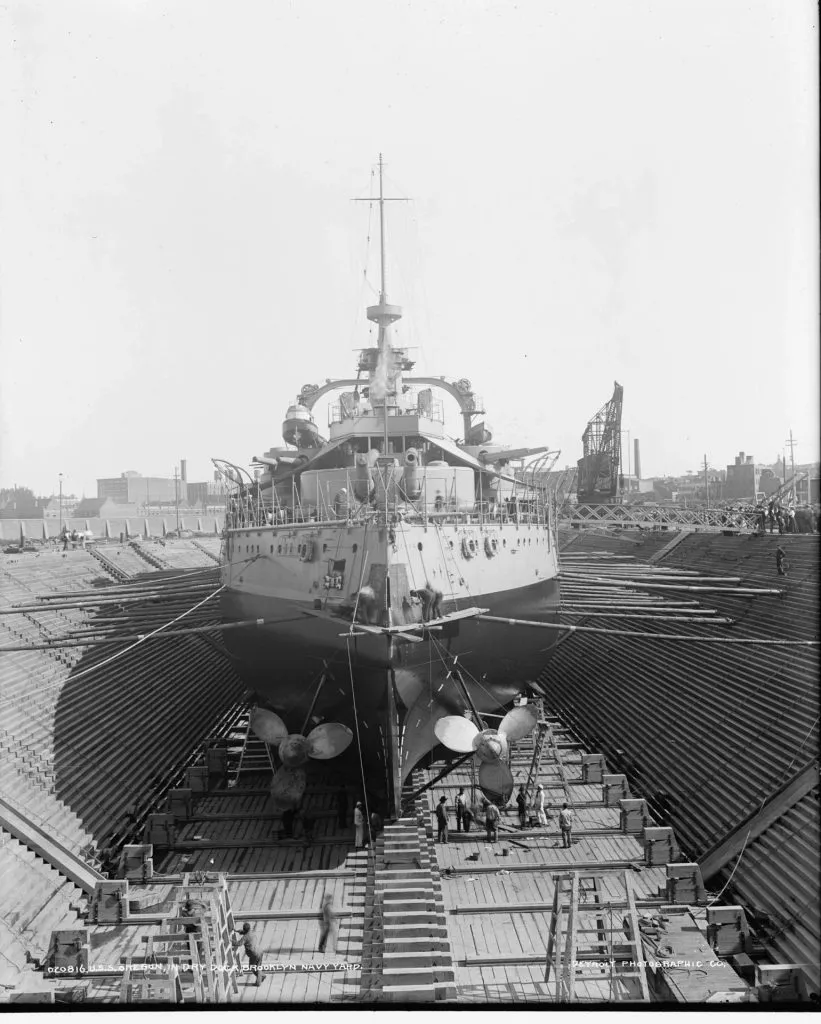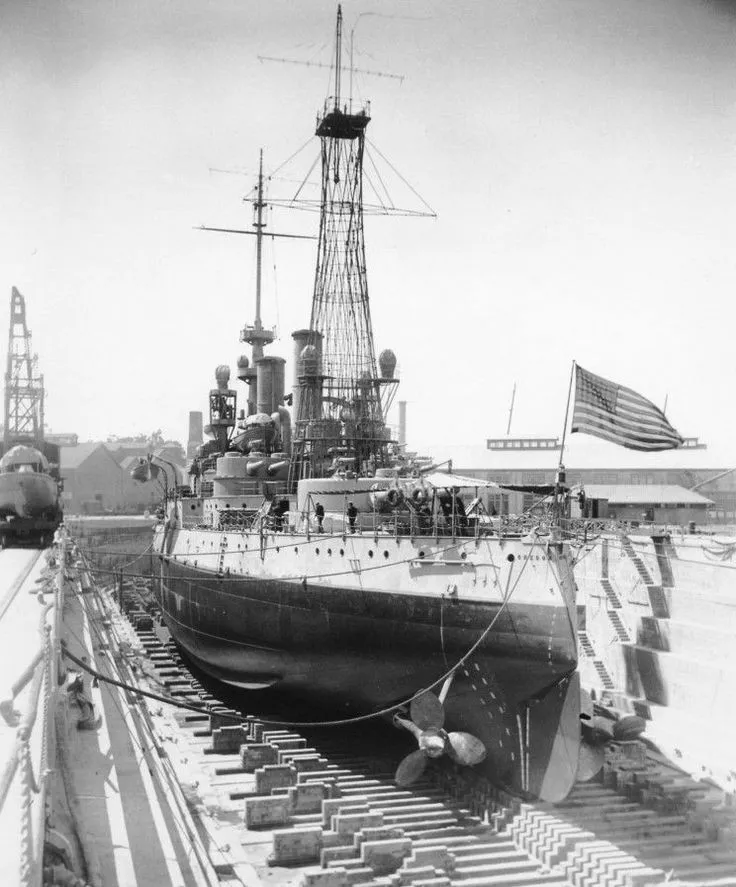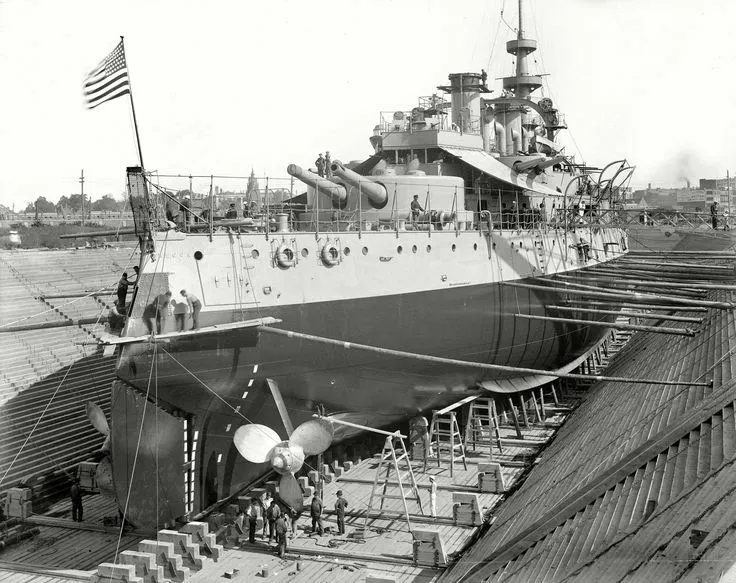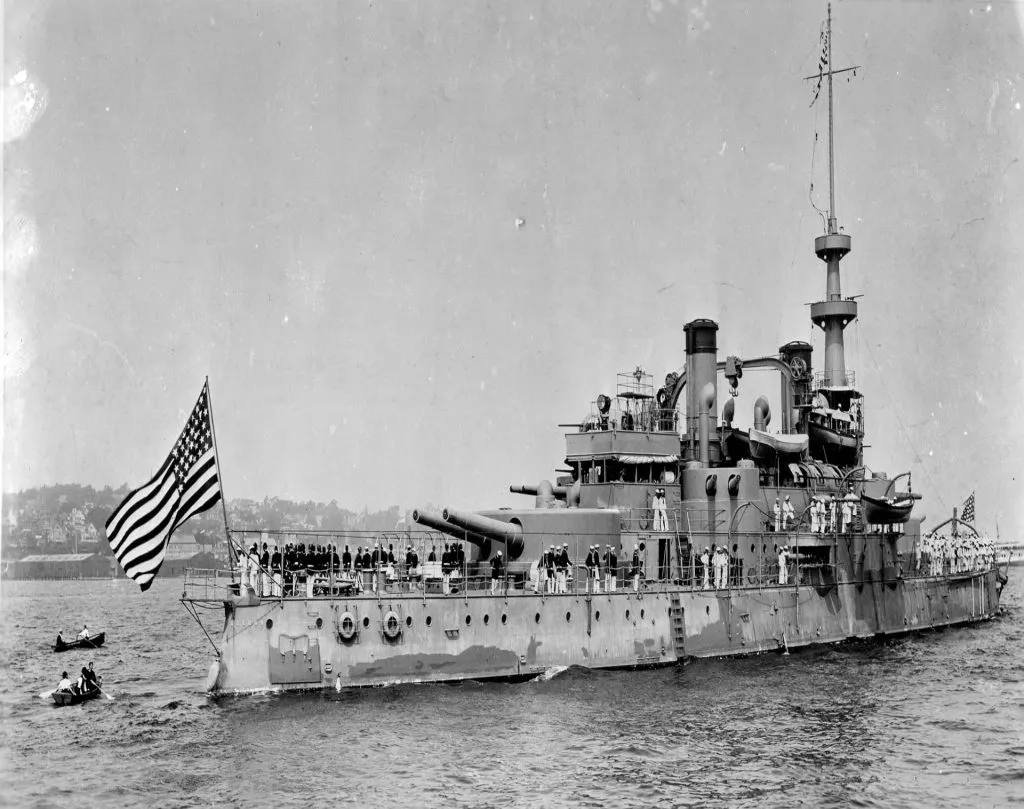
In the late 19th century, the Brooklyn Navy Yard stood as a cornerstone of American naval innovation and might. Among its many historic milestones, one of the most notable moments came in 1898 when the USS Oregon (BB-3), the last of the Indiana-class pre-dreadnought battleships, entered its dry dock. This event not only marked a significant point in naval history but also symbolized the transition of American naval power at the turn of the century.
The USS Oregon, commissioned in 1896, was the final ship of the Indiana class, which represented the peak of pre-dreadnought battleship design. The class was renowned for its robust armament and formidable armor, reflecting the technological advancements of the era. With a length of 350 feet and a displacement of 10,288 tons, the Oregon was a formidable presence on the seas, armed with a main battery of four 13-inch guns and secondary armament of 8-inch guns.

In 1898, the USS Oregon made headlines not just for its impressive specifications but for its crucial role in the Spanish-American War. The ship’s remarkable journey from the West Coast to the East Coast, covering approximately 14,000 miles around South America to join the fleet in the Caribbean, demonstrated both its endurance and the strategic importance of its deployment.
When the Oregon entered the Brooklyn Navy Yard dry dock in 1898, it was a momentous event. The dry dock, a massive engineering feat in itself, was the place where the Oregon would undergo essential repairs and maintenance. The sight of this colossal battleship in the dry dock, surrounded by the bustling activity of the Navy Yard, was a testament to the ship’s critical role in America’s naval strategy and its ongoing commitment to maintaining naval superiority.

The dry docking of the USS Oregon marked more than just a routine maintenance check; it symbolized the shifting tides of naval power. As the last of the Indiana-class battleships, the Oregon’s presence in the Brooklyn Navy Yard underscored the end of an era of pre-dreadnought designs. The arrival of new technologies and the advent of the dreadnought battleships would soon redefine naval warfare.
The USS Oregon’s legacy extends beyond its technical specifications and wartime service. It represents a pivotal moment in naval history, showcasing the evolution of battleship design and the strategic importance of maintaining a powerful fleet. The Oregon’s service, combined with its dramatic entry into the Brooklyn Navy Yard, encapsulates a transformative period in American naval history.

Today, the story of the USS Oregon and its time in the Brooklyn Navy Yard dry dock continues to captivate historians and naval enthusiasts. It serves as a reminder of the enduring legacy of American naval engineering and the evolution of naval warfare. As the last of the Indiana class, the Oregon remains a symbol of the transition from traditional battleship design to the more advanced dreadnought era, embodying a critical chapter in the story of naval power and innovation.
In reflecting on the USS Oregon’s place in history, we gain a deeper appreciation for the technological and strategic advancements that have shaped modern naval forces. The ship’s service, its journey to the Brooklyn Navy Yard, and its role in the Spanish-American War highlight the dynamic nature of naval evolution and the ongoing quest for maritime excellence.
Leave a Reply